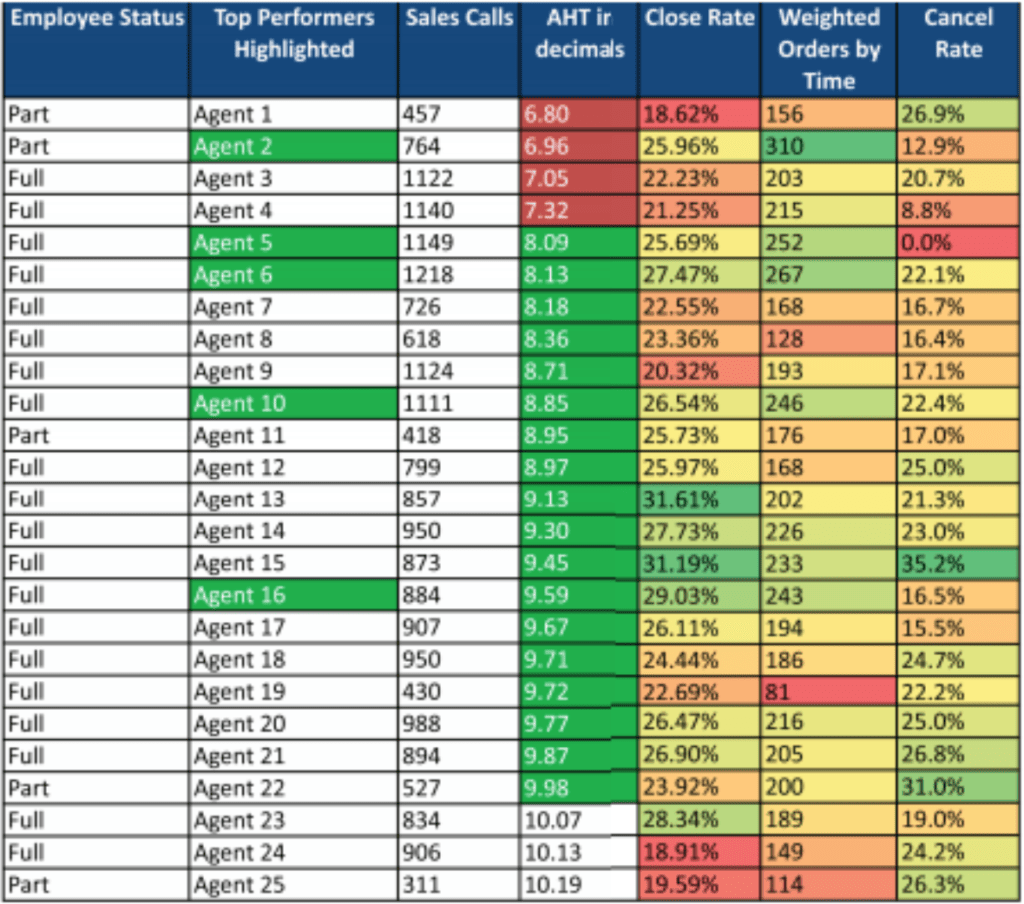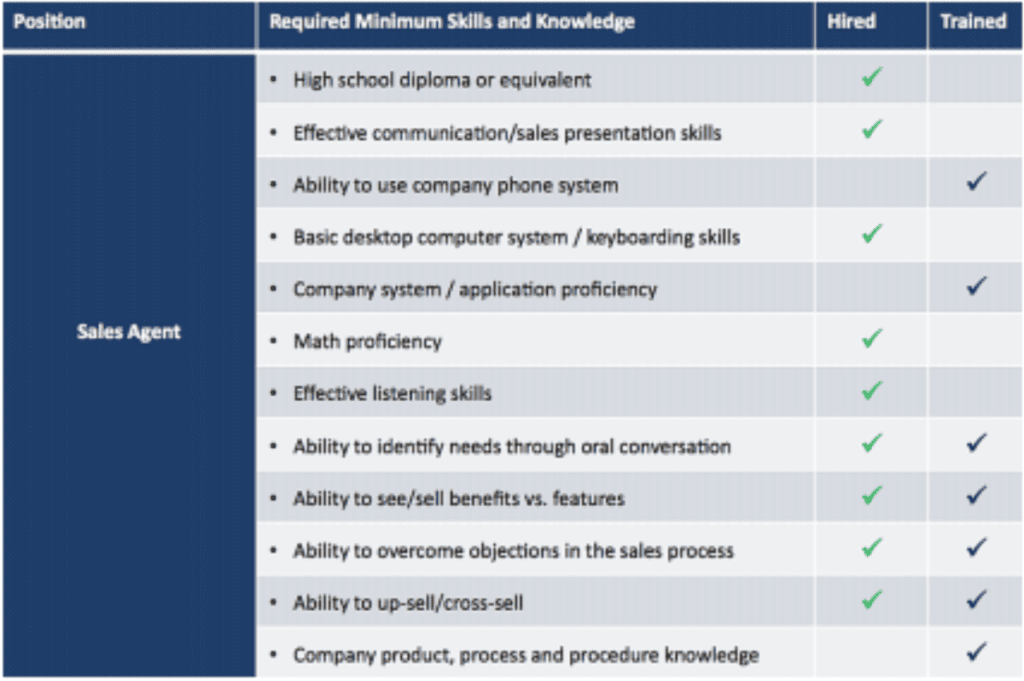
December 7, 2022
Part 1 of 2 in a Series—Call Center Best Practices for Recruiting, Hiring and Training
To improve performance and provide a superior customer experience, call centers often focus on operational management quality and workforce management. While these areas are certainly important, your call center’s ability to exceed customer expectations depends on people. Your recruiting, hiring and training strategy are critical to your customer service and your ability to retain high-quality staff.
Recruiting and training agents with the appropriate skills is essential to provide superior customer service. Supervisors must lead the agents with the right skills to manage them to high performance.
This post focuses on the first of two strategies that COPC Inc. suggests for recruiting, hiring and training effectively:
- Define your minimum hiring and training requirements for key positions
- Build your recruiting, hiring, and training approaches based on your minimum requirements
Defining Minimum Job Requirements
Developing the proper minimum requirements requires understanding core skills and reviewing data to define the correct high-performance attributes. With a well-defined list of skills, knowledge and attributes necessary to perform the job, you will be able to fill the position correctly. Without the ability to compare applicants to specific requirements, finding the correct person for the job becomes a matter of luck.
COPC Inc. offers three recommendations to determine the appropriate skill set to address an omnichannel customer’s needs. The examples presented are agent-focused, but the same approaches apply to supervisors and other key positions within your operation.
Analyze the Top Performers’ Core Skills
Which attributes make your best people perform at the highest level? Figure one shows an example of how a COPC Inc. call center client analyzed various metrics to determine high performance. The metrics highlighted in green were the center’s basis for analyzing the core skills of those agents that led them to be high performers.
Figure One

When you think of high performance, base your definition on a comprehensive overview rather than one metric. For example, in Figure one, several metrics were compared and weighted to determine the overall high performance of sales agents.
Rather than simply measuring one metric such as average handle time (AHT) or close rate, the call center added other parameters, such as conversion/close rate. They incorporated the cancellation rate and weighted the number of orders based on the time worked to identify top performers.
Find the Correlations Between Attributes and Performance
In conjunction with identifying the top performers, determine which skills contribute to their exceptional results. To isolate core skills, COPC Inc. recommends brainstorming with your human resources staff to determine vital skills, such as typing speed, listening effectiveness, customer orientation, problem-solving capabilities and communication skills. Then analyze those skills to determine if they correlate to high performance.
Figure two is an example of a COPC Inc. call center client’s analysis that shows a correlation between typing skills and the agent’s AHT. When you see a high R2 of 0.79, it means there is a strong correlation. You can conclude that a newly hired agent’s typing speed correlates with their AHT performance.
Figure Two

When COPC Inc. paired this analysis with an outlier analysis (not shown here), we found that if the call center wanted a potential recruit to reach an acceptable AHT, they needed to establish their minimum typing speed at 35 words per minute.
Get Feedback from Customers and Management Team
It is essential to ask your customers what skills they value the most in your agents. Use your current customer satisfaction data to identify specific customers to query. Another option is to assemble a customer focus group for input about the skills they expect in an agent.
It’s best to get feedback about the skills the management team thinks lead to high performance. Ensure the minimum required skills are well-defined, not just previous work experience.
For instance, it is common for a sales organization to require either “prior sales experience” or “prior call center experience.” However, the attribute “prior sales experience” does not fully define the requirements to be a good sales agent. Only by digging deeper will you find the specific skills that all good sales performers possess.
Once you have identified the full breadth of minimum skills needed to perform the job well, COPC Inc recommends that you consider the following:
- Which minimum skills are necessary for hiring and therefore apply to recruiting?
- Which minimum skills and knowledge are necessary for proper training?
Figure three provides an example of a minimum skills list. It shows how to define the skills necessary for hiring and which skills the organization will teach during training.
Figure Three

Long-term retention begins with recruiting, hiring and training staff with the right skills and knowledge to be successful. Defining the minimum job requirements is a critical first step that drives the rest of the process, ensuring you have the staff who will meet the demands of today’s changing call center.
In part two of this series, we’ll look at how to apply your minimum required skills as you build your recruiting and training programs focusing on high performance